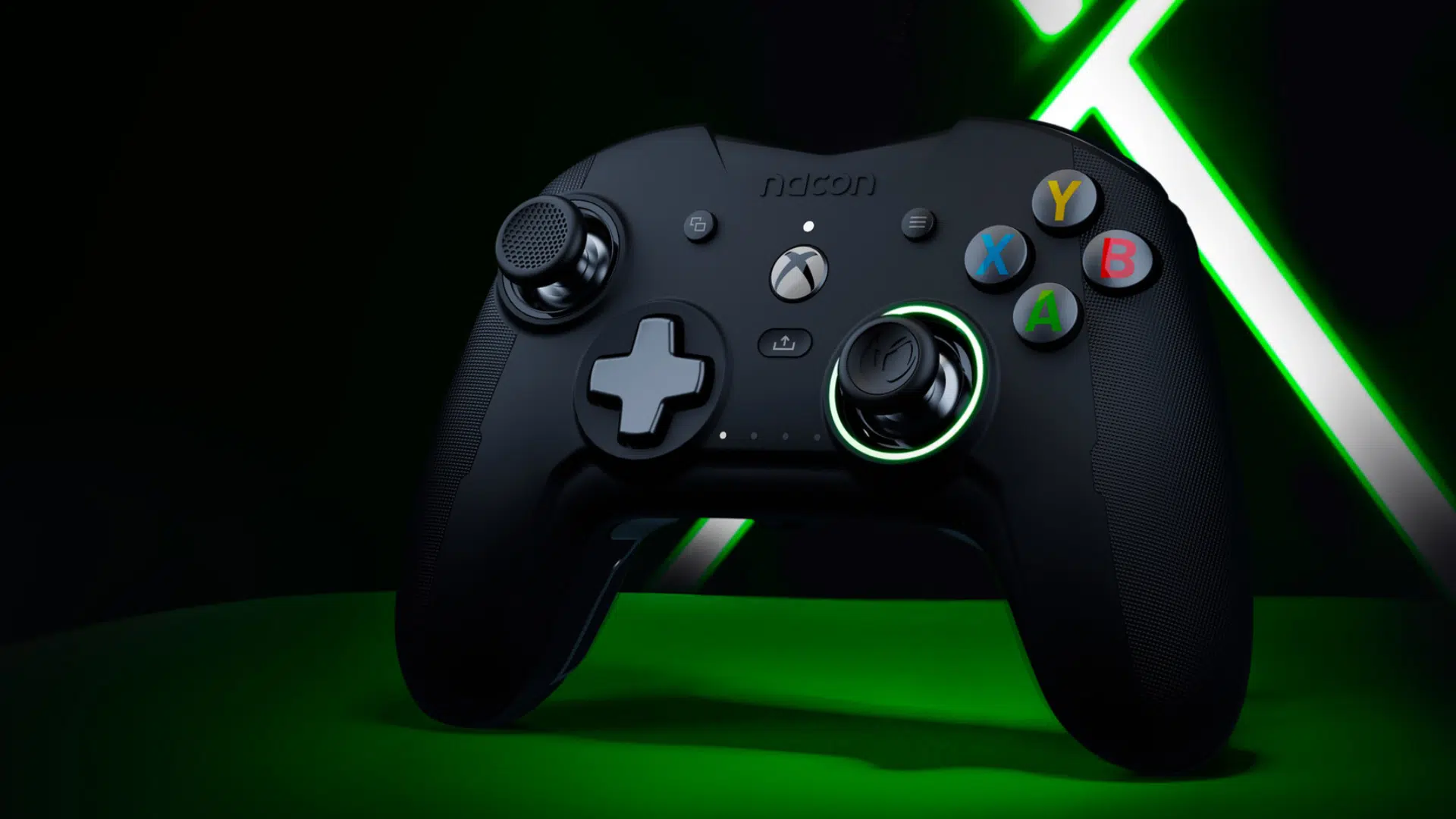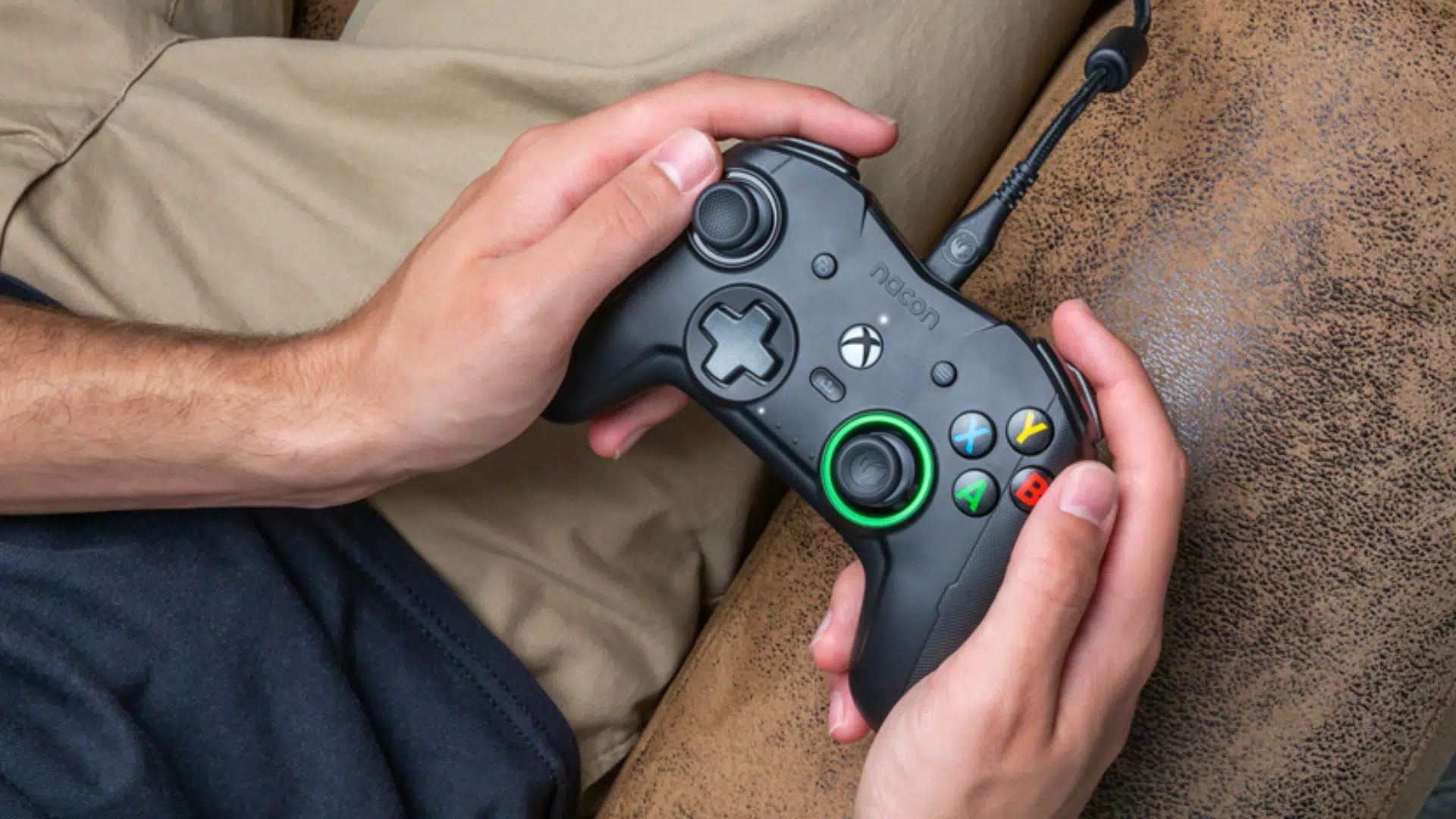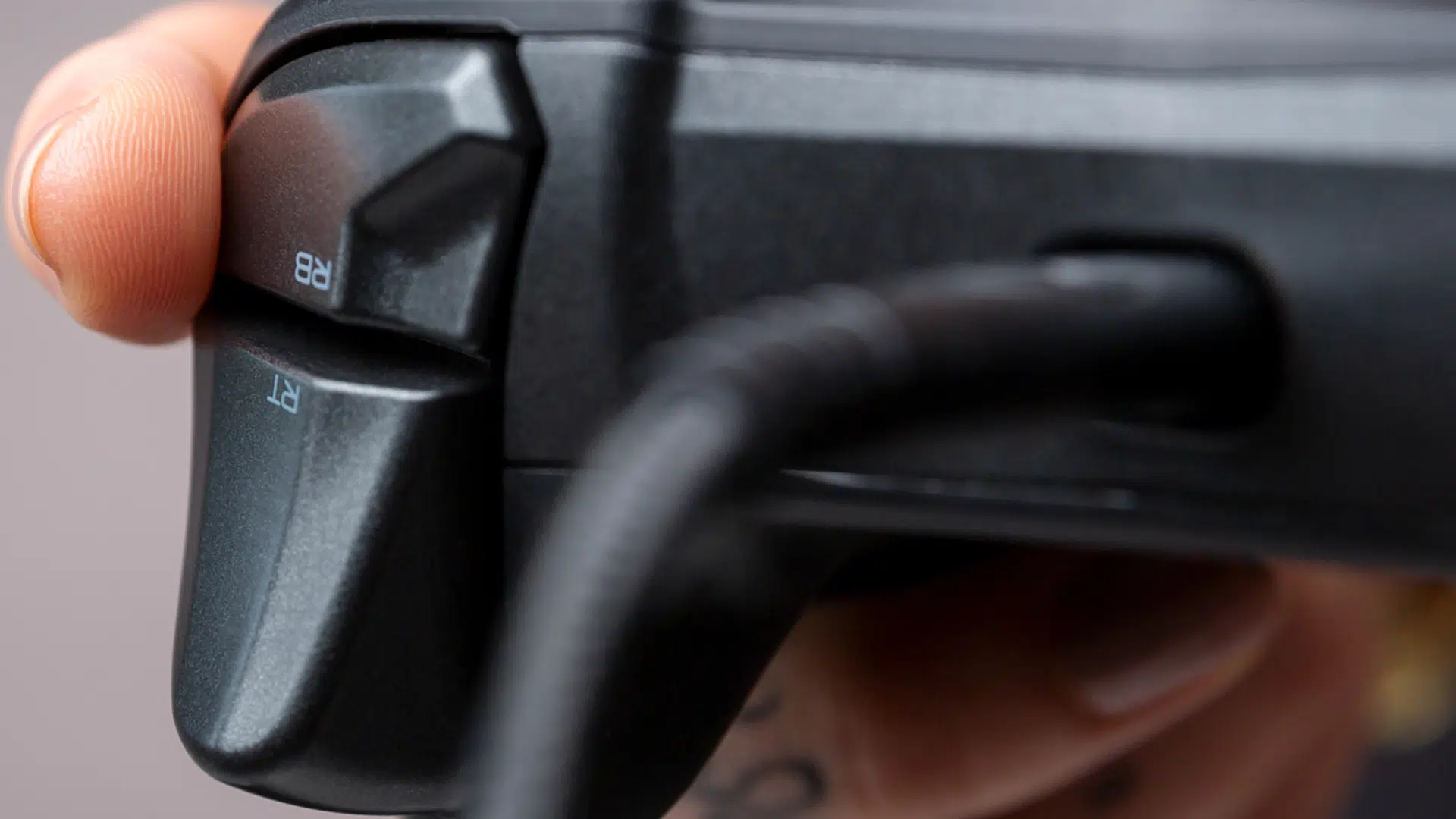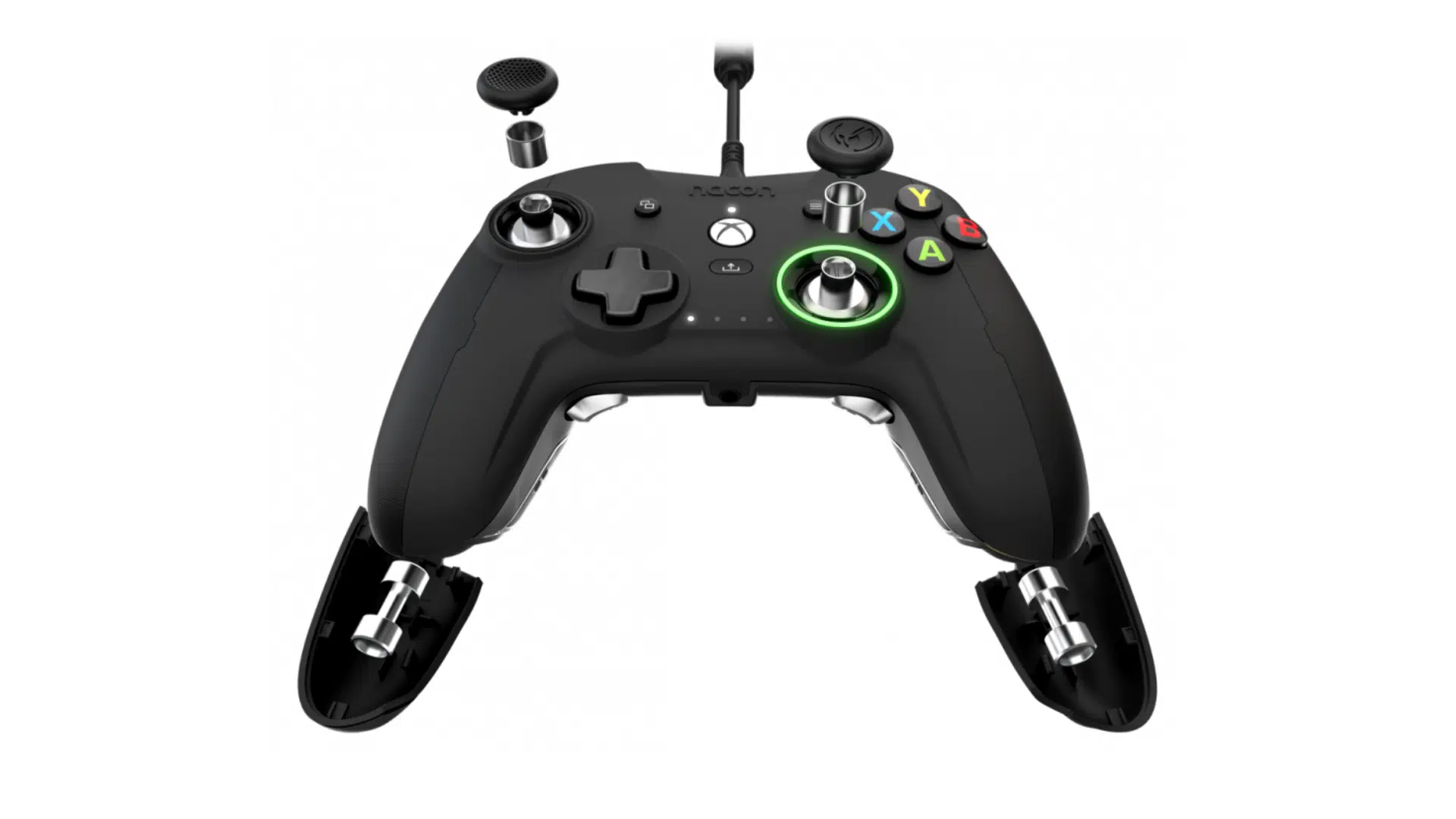When it comes to high-end programmable controllers, the options have become surprisingly varied. Given the market diversity and the steady disappearance of demo cabinets as a stable of the video game buying experience, it can be hard to decide when you’re in the market for this more physical aspect of video game media. If that’s you right now, let this be a buyer’s guide for the Nacon Revolution X Pro Controller. It is designed for the Xbox Series S|X and PC and is $79.99 at retail. But is it worth it? Read on for our review to find out.
The Ergonomics and the Look-a-nomics
The first thing you’ll notice about the Revolution X is how it looks. It is, likely intentionally, reminiscent of the standard black Xbox proprietary controller. Visually, the biggest differences are the lights on the face and the buttons on the back. Instead of an LED backlight behind the Xbox button, there is a single white power light above the Xbox button and a ring of LEDs around the right thumb stick. We’ll talk about it more later, but I didn’t expect to love the different approach to power lighting as much as I did.
The controller features four buttons on the handles. Similar to the paddles found on similar gamepads like the Xbox Elite controllers. There are two up by where your middle fingers sit and two long ones down by the ring and pinky fingers. This brings us to the ergonomics.
As a man with big hands, I am always excited when a controller fits me well. The Revolution X feels great to use. The handles are longer and ever so slightly thicker than the standard controllers. The positioning of the hands as you hold it is also different. The handles have a much more downward angle, meaning that when you hold the controller, your hands are forced to be slightly farther away to help your wrists stay in comfortable alignment. I found this to be the perfect positioning for me. But some people may not be as comfortable with this arrangement.
As for the inputs themselves, I found that everything works and feels solid. The face buttons are larger and closer together than usual and the d-pad has a soft but not mushy feel when pressed. The top two programmable buttons on the back are also both comfortable to use, but I found it awkward to use the lower two buttons. These were the only part of the controller that didn’t feel solid. In my time with the device, they feel wobbly and make an odd plastic-y sound when held down. I didn’t particularly find them comfortable and avoided using them.
As far as the physical inputs themselves, the stand-out successes are the bumper and trigger buttons. They are solid, hard plastic. They click in a satisfying way and solve the biggest problem I’ve ever had with Xbox’s hardware, which is the sometimes squishy, easily breakable bumper buttons. These are not like those, and it really made a difference in games where the bumpers matter.
Like other controllers of this type, it comes with a kit of small mechanical pieces that change the feel of the controller itself. Included in this are three sets of weights to put in the handles, which I didn’t find as all that different from each other but very different from not having any weights. The nicest of these small augmentations was the method by which the thumb sticks are interchangeable. Rather than the usual magnets, these thumbsticks click in place with little pressure hinges. It makes them feel much more secure. However, it also creates the risk of them breaking and not staying in place anymore. That being said, it seems like that would take a lot of popping them off and on again, something I don’t suspect many people will be doing. I do wish that there were more options, as the only alternate set of sticks in the kit is a smooth-finished set that are the same height.
Our Scheduled and Unexpected Programming
The biggest draw for most of these pro controllers is the programmable features: changing the responsiveness of the thumbsticks or the triggers and adding the input from one button to also be fired off from one of the back buttons in particular. The Revolution X has a deep programming platform by way of an app you have to download to your Xbox or PC. In the box is a piece of paper with a link to the complete manual and the way to quickly program the back buttons straight from the controller in “Classic” mode.
On the back, there’s a small switch with a button next to it. These are how you switch between your presets. You can flip between Classic and Advanced with the switch and then toggle through up to four profiles in Advanced, meaning that functionally you can have five different setups ready to go at a time. The app used to program the controller’s advanced profiles is mostly intuitive, but there are some oddities, so I imagine that most will find that it has a quick learning curve.
The options are vast, even if most of them are what you would expect if you’ve used similar products. I found being able to customize the color and pattern of the LEDs around the right stick to signify the different profiles cool. I also loved the equalizer for the headphone jack to perfectly tune your headphones for each profile.
The controller has four already-built profiles that you can’t edit. Based on their names, they exist to give you an idea of potential uses for the different settings, and I appreciated the show-don’t-tell tutorial these represent. However, this method is not applied across the whole product. The biggest problem I had with the app, and the controller in general, is that there isn’t any way to test or observe how the different settings feel when in use. You have to leave the app, load a game you intend to use that profile for, and try it out in action to get a feel for what you’re doing. Other pro controllers I’ve used have had a live display of some kind showing you directly how your inputs are changed. It’s a bummer that something like that wasn’t included, and I found that it held back functionality in some ways.
Where the Proverbial Rubber Meets the Existential Road
All that being said, I know we’re begging the question: what is it like to play games with the Revolution X? I played various games from different genres: Persona 3 Portable, Crysis, Elden Ring, Injustice 2, GRID Legends, etc. I found that the controller was comfortable with all of them but found it particularly enjoyable with GRID and Injustice 2. I’m not particularly good at Elden Ring, and the controller didn’t seem to help much, but it was nice to use items, dodge, and control the camera simultaneously without lifting my thumb. With GRID Legends, I became very comfortable and plan on using this controller for car games from now on.
I’d go as far as to say that this is officially my new daily driver for all games. Despite the issues I’ve mentioned, I really do love it, and I am more enthusiastic about it than I was for the Xbox Elite Series 2 after using it for a while. So if that’s the comparison you’re looking at: I would say save yourself the extra money and go with this one. It has the value of a pro controller for a better price, and I found that even with the lower two back buttons not feeling great, I think I would prefer them to the paddles, even for just the sake of not having them fall off like the paddles can. It’s a solid piece of hardware with a few drawbacks. Definitely recommendable; just be aware of the shortcomings.
Score: 9/10
Pros:
- Mostly Sturdy and Solid in Your Hands
- Satisfying Arrangement of Controls
- Extremely Detailed Programming Options
- Cool LED Ring
Cons:
- Mild Build Issues with the Lower Programmable Buttons
- Obfuscated Differences with Some Profile Settings
__________________________________________________________________________
The Nacon Revolution X Pro Controller is out now for $79.80. The manufacturer provided a Nacon RIG Revolution X Pro Controller for review purposes. All images were sourced from the manufacturer’s website. You can read MP1st’s review and scoring policy right here.



